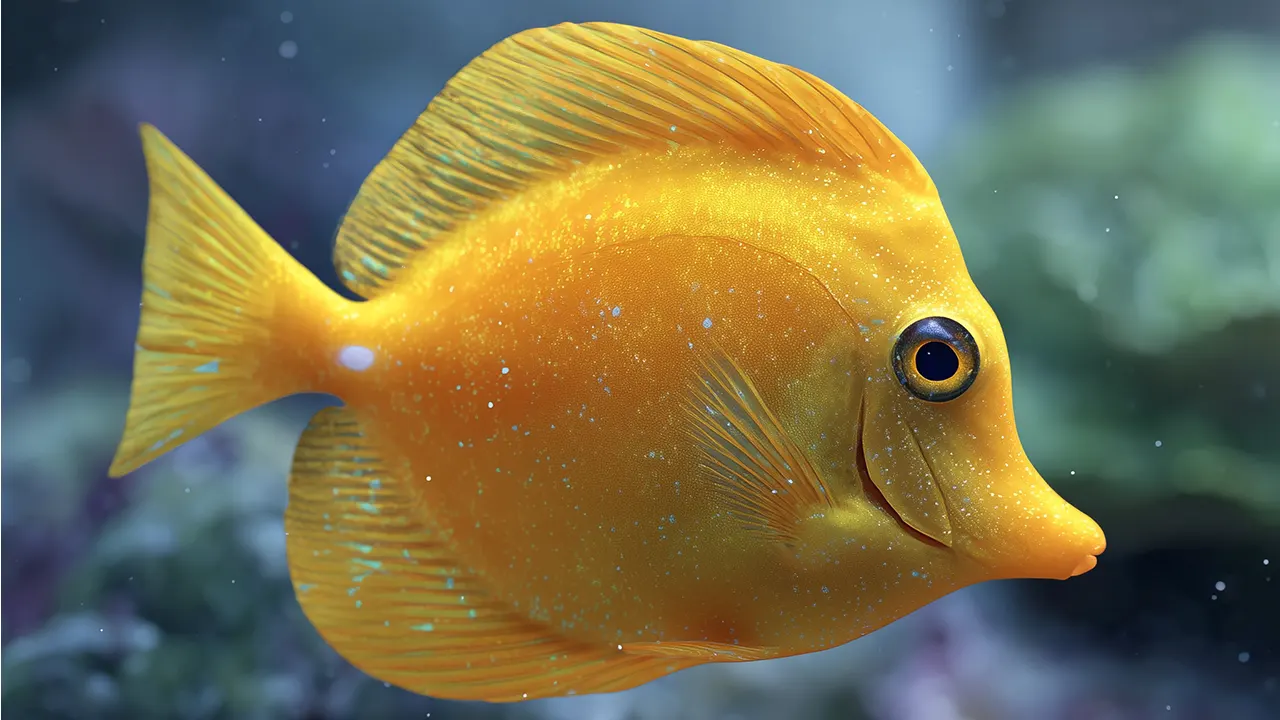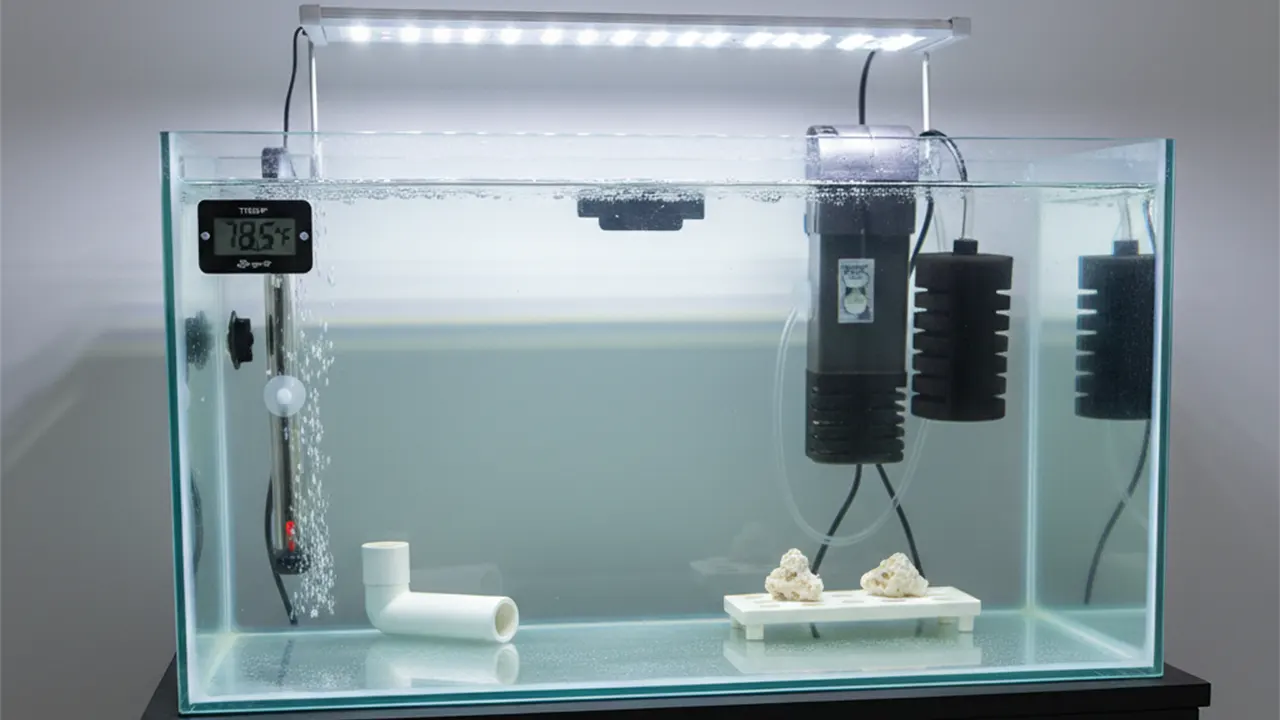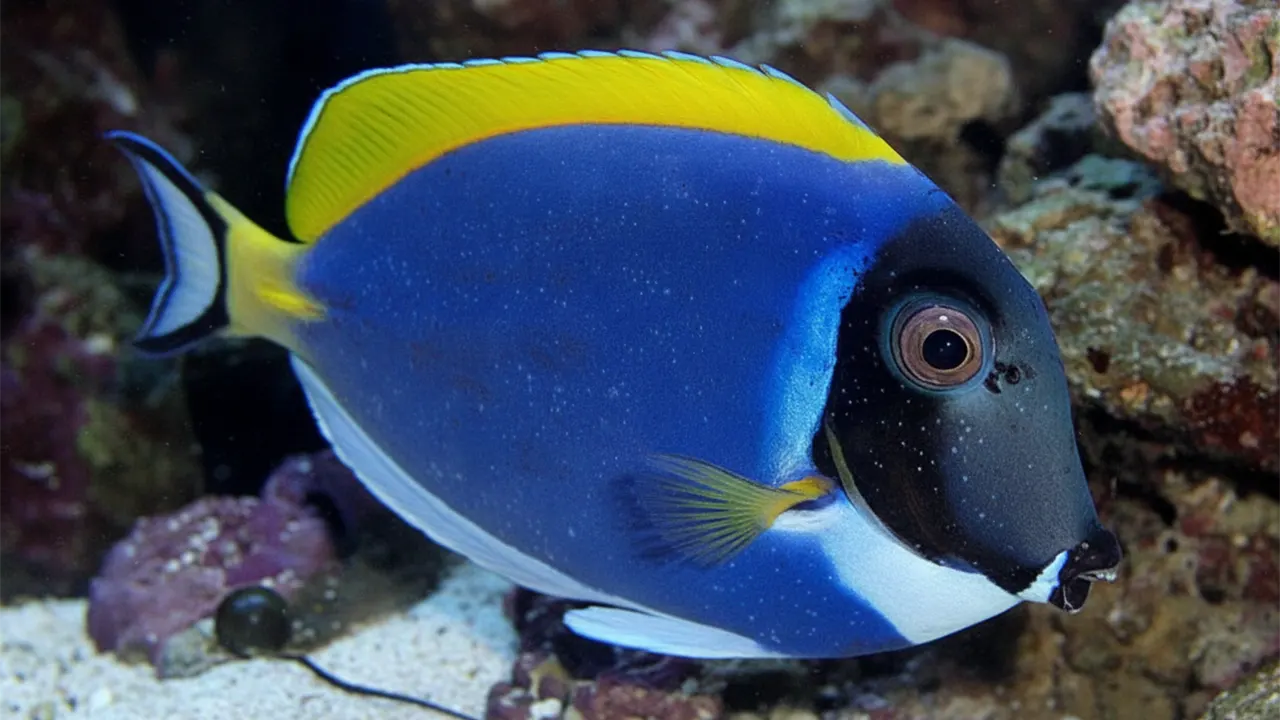A saltwater aquarium is a living work of art, colorful, dynamic, and mesmerizing. But behind the beauty lies fragility. One stressed fish can spark a chain reaction, turning your thriving reef into a graveyard in days.
Unlike the ocean, where dilution keeps pathogens in check, an aquarium is a closed loop. Once a disease takes hold, it spreads relentlessly. The difference between losing a single fish and losing them all is how fast you respond and how well you prepare.
This guide is your playbook. You’ll learn how diseases spread, how to recognize early warning signs, and how to prevent and treat them.
Table of Contents
Key Takeaways
- Fish diseases spread quickly in closed aquarium systems.
- Early warning signs include appetite loss, flashing, rapid breathing, and unusual hiding.
- The most common saltwater fish diseases are marine ich, velvet, brooklynella, uronema, flukes, bacterial infections, and fungal infections.
- Stress from poor water quality, overcrowding, or aggressive tank mates weakens immunity and fuels outbreaks.
- Quarantine tanks, stable water parameters, and proper nutrition are the pillars of disease prevention.
- Always isolate and treat sick fish in a hospital tank. Never medicate the display tank, especially in reef systems.
How Saltwater Fish Diseases Spread in Aquariums

Pathogens multiply invisibly, which is why prevention always beats cure.
Consider Ich. The white spots you see are just one stage. After dropping off the fish, parasites reproduce in the sand bed, releasing hundreds of new attackers. To the untrained eye, it looks like the disease “went away.” In reality, it’s reloading for the next assault.
Transmission also happens through carelessness. A single net used between tanks can transfer parasites. Even wet hands can carry microscopic threats. Because aquariums are closed systems, those pathogens concentrate fast.
Stress is the wildcard. Fish constantly fend off low-level pathogens. But added stress, like a bullying tankmate or a sudden salinity swing, can trigger their defenses to collapse.
I have a quarantine setup for any new fish. Any equipment that I use in my quarantine tank does not go into my display tank and vice versa. Keep everything separate.
Signs and Symptoms of a Sick Fish

Subtle changes in behavior are your first alarm bells.
Saltwater fish don’t feign illness. If something looks off, it probably is. Early signs show up in behavior. The wrasse that suddenly refuses food, the clownfish that starts rubbing against rocks, the tang panting with flared gills. These subtle cues often appear days before visible damage.
Physical symptoms confirm what the behavior suggests. White cysts point to Ich, while a golden shimmer screams Velvet. A heavy slime coat indicates Brooklynella. Frayed fins, ulcers, or bloating suggest bacterial infections. Cloudy or bulging eyes (“popeye”) and cottony fungal tufts are other red flags.
Emergency cases are unmistakable. A fish lying on its side, gasping at the surface, or spiraling downhill will not go unnoticed. Diseases like Velvet and Brooklynella are infamous for the speed of death.
I once skipped quarantine for a batch of new fish that “looked healthy.” Within two weeks, Ich had infected most of my tank. By the time I could react, half my tank was gone. It’s the kind of mistake you only make once. After fallowing my tank for a fallow period, I now quarantine all new fish.
Common Saltwater Fish Diseases (and How to Recognize Them)
Parasitic Diseases
- Marine Ich (Cryptocaryon irritans): White grains of salt on skin, flashing, labored breathing. The parasite’s life cycle means it vanishes and reappears. Untreated, it weakens fish over weeks.
- Marine Velvet (Oodinium): Golden dust, clamped fins, rapid breathing. Lethal within 48 hours. Emergency treatment required.
- Brooklynella (“Clownfish Disease”): Heavy mucus coat, lethargy, refusal to eat. Rapid killer, especially in clownfish. Formalin dips are essential. Learn more about clownfish care.
- Uronema: Red sores, tissue erosion, listlessness. Often strikes chromis in overcrowded, dirty tanks. Aggressive and deadly.
- Flukes: Irritated gills, flashing, cloudy eyes, weight has a loss . Invisible to the naked eye but eliminated with praziquantel. (Hikari PraziPro)
Bacterial Infections
- Fin Rot: Ragged, dissolving fins caused by opportunistic bacteria in stressed fish.
- Ulcers: Open wounds on the body, usually from injuries that become infected.
- Popeye (Exophthalmia): Swollen, protruding eyes. It can result from trauma or infection.
Fungal Infections
- Cotton-like growths on fins or body. Usually appear after untreated bacterial or physical damage.
The Role of Stress and Immunity
Every saltwater tank contains potential threats. Parasites like Ich or Velvet often exist at low levels. Healthy fish usually fend these off with their immune systems. But when stress weakens those defenses, pathogens overwhelm the fish.
What Causes Stress in Saltwater Fish?
- Aggressive tank mates: Constant chasing, nipping, or bullying keeps cortisol levels high, suppressing immune response. Even if no visible injuries occur, chronic stress leaves fish vulnerable.
- Unstable water conditions: Fluctuations in salinity, temperature swings, or spikes in ammonia/nitrite are stressful. Fish evolved in the stability of the ocean; sudden shifts are unnatural and taxing.
- Poor acclimation: Dumping a new fish directly into your tank without proper acclimation creates osmotic shock. Even if the fish appears fine, internal stress damages its ability to fight off disease.
- Overcrowding: Too many fish increase competition for territory and food.
Practical Ways to Reduce Stress
- Acclimate slowly: Use drip acclimation to match salinity and temperature gradually when adding new fish. This minimizes osmotic shock.
- Thoughtful aquascaping: Provide caves, overhangs, and territories so fish can establish safe zones. Territorial species, like tangs or wrasses, are far less aggressive when they feel secure in their space.
- Stable conditions: Invest in reliable heaters, auto top-off systems, and testing routines. Consistency is more important than perfection.
- Lighting transitions: Sudden on/off lights startle fish. Use timers or dimmers to mimic natural dawn and dusk cycles.
- Proper stocking: Research the adult size, behavior, and compatibility of each fish before adding it. Crowding a tank with incompatible species is a recipe for stress and disease.
How to Prevent Diseases in Saltwater Fish

The quarantine tank is your firewall. A bare-bottom 10–20 gallon setup with a heater, sponge filter, and PVC pipe is enough. Keep new fish here for two to four weeks. Watch, observe, and only move them once they’re eating well and symptom-free.
Many aquarists run prophylactic treatments. Copper for parasites or praziquantel for flukes during this stage. There is a debate about whether it’s necessary when the fish shows no signs. But you can use your own judgement.
Create an environment where pathogens struggle:
- Water quality is the second line of defense.
- Stable temperature (76–80°F)
- Salinity (1.023–1.025)
- Ammonia and nitrite at zero
- Nitrates below 20 ppm
By logging weekly test results, you’ll catch creeping problems. Like rising nitrates before they explode into full-blown crises. Staying on top of nitrate levels in saltwater aquariums and using RO/DI water are simple habits that pay off in long-term stability.
Just as important is nutrition. A varied, vitamin-rich diet strengthens immunity and helps fish fight off pathogens naturally. Often better than medication ever could. If you’re looking for inspiration, check out our guide to the best saltwater fish food.
Treatment Options for Saltwater Fish Diseases
Start with a hospital tank. Keep it bare-bottom, with simple filtration, steady heat, and strong aeration.
Never medicate your display tank. Most treatments are lethal to corals and invertebrates.
From there, precision matters.
Copper or chloroquine for Ich and Velvet. Formalin dips and antibiotics for Brooklynella and Uronema. Broad-spectrum antibiotics for bacterial infections. Antifungal baths and cleaner water for fungal outbreaks. Praziquantel for flukes.
Reef keepers face a tougher challenge. Since medications can nuke corals, you must pull infected fish into quarantine. In the display, UV sterilizers can help cut parasite numbers, but they are a supplement, not a cure.
If you have an outbreak, you need to have your tank fallow. Run your display fishless for six to eight weeks to starve parasites of hosts. Clean nets and siphons with bleach or vinegar. Keep a disease log to track what worked and what didn’t. Your future self will thank you.
Types of Fish Diseases Reference Table
| Disease | Symptoms | Progression | Treatment | Urgency |
|---|---|---|---|---|
| Marine Ich | White spots, scratching | Weeks | Copper, chloroquine | Medium |
| Marine Velvet | Gold dust, rapid breathing | 24–48 hours | Copper | Critical |
| Brooklynella | Mucus, lethargy | 1–2 days | Formalin dips | Emergency |
| Uronema | Red sores, lethargy | Fast | Antibiotics | High |
| Flukes | Gill irritation, flashing | Variable | Praziquantel | Medium |
| Bacterial | Ulcers, fin rot, popeye | Variable | Antibiotics | Medium |
| Fungal | Cottony tufts | Slow | Antifungals | Low |
Stay Vigilant, Act Fast, and Protect Your Tank
Saltwater fish diseases are part of the hobby. But they don’t have to be tragedies. Prevention through quarantine, water quality, and good nutrition solves most problems. The rest comes down to vigilance. Spotting a fish with a loss of appetite, gasping at the surface, or flashing against rock, you need to act immediately.
Build a first aid kit
- Copper
- Formalin
- Antibiotics
- Praziquantel
- Test kits
- Quarantine tank
With those tools on hand, you’ll turn a potential tank-ending outbreak into a manageable challenge. And your reward will be what every aquarist wants: a thriving, vibrant reef that lasts for years.
For more foundational guidance, see our beginner’s guide to saltwater aquariums and why many hobbyists choose saltwater over freshwater aquariums.
 Mixed Reef Tank
Mixed Reef Tank

